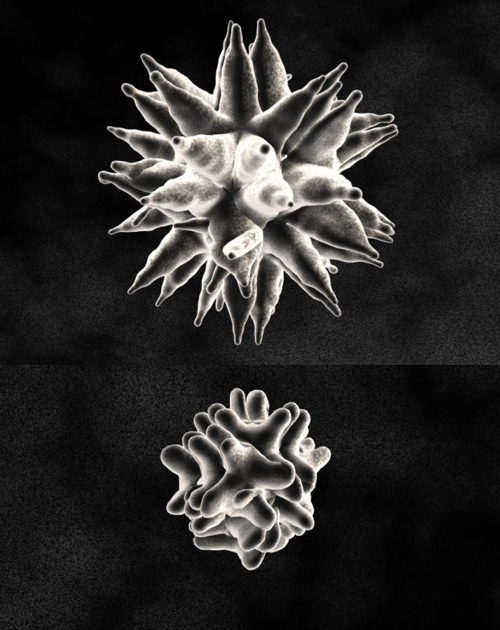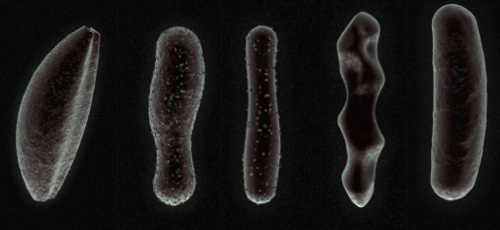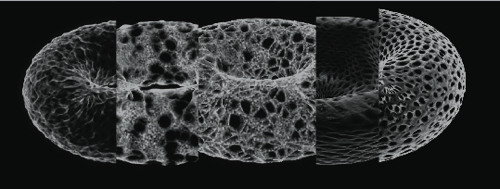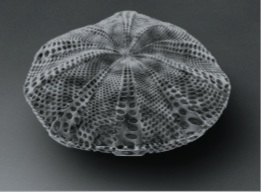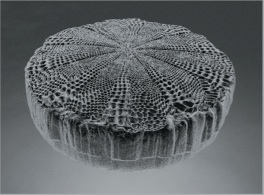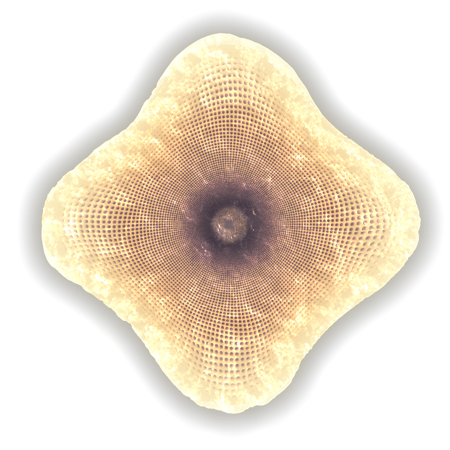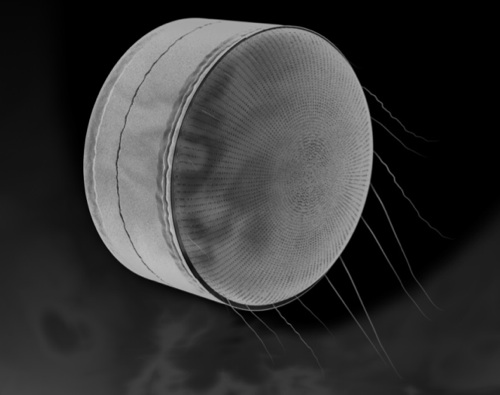Building organic forms
 In order to create the organic forms of my virtual organisms I am following strict rules to conform with my concept of computer generated mathematical forms. I can't manually shape them like a 3D modeller would do point by point and polygon by polygon, as they should all be based on expressed mathematical equations. In the examples on the left I went about this by starting with a simple perfectly mathematical platonic solid with each of its side equally subdivided and extruded using sound. The textures are based on 2d maps of fractals that are resolution-free as they are pure mathetical data.
In order to create the organic forms of my virtual organisms I am following strict rules to conform with my concept of computer generated mathematical forms. I can't manually shape them like a 3D modeller would do point by point and polygon by polygon, as they should all be based on expressed mathematical equations. In the examples on the left I went about this by starting with a simple perfectly mathematical platonic solid with each of its side equally subdivided and extruded using sound. The textures are based on 2d maps of fractals that are resolution-free as they are pure mathetical data.
In this first video you can see one of these first organisms reacting to a Mozart's Requiem. The reason I have used classical music in these experiments is because it is more organic and more random than beat-based electronic music. The result is quite an organic feel which is achieved by the innate geometry of this object.
